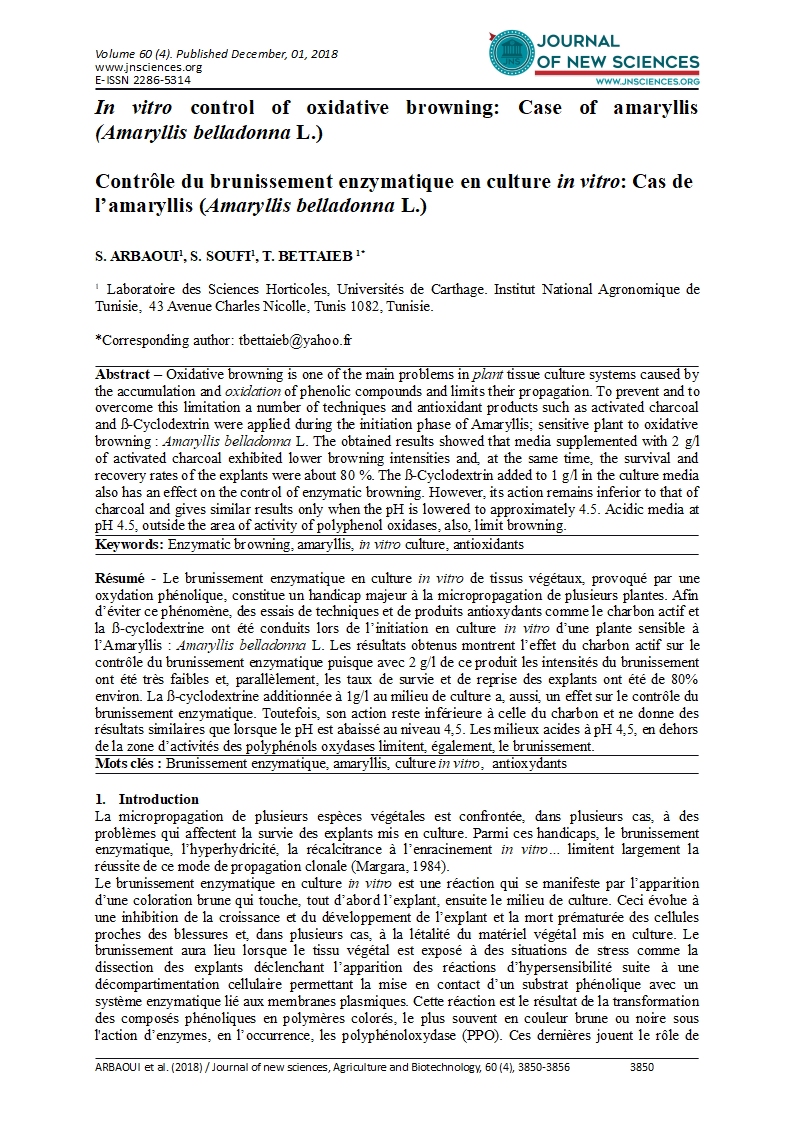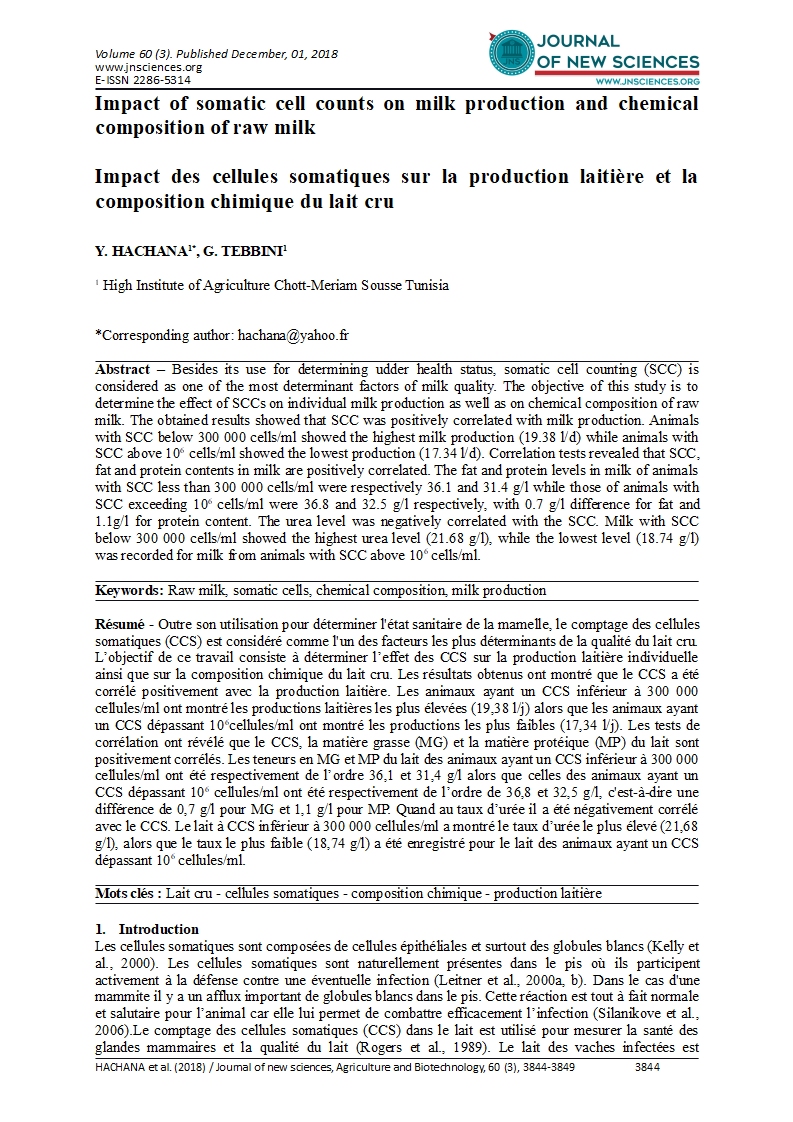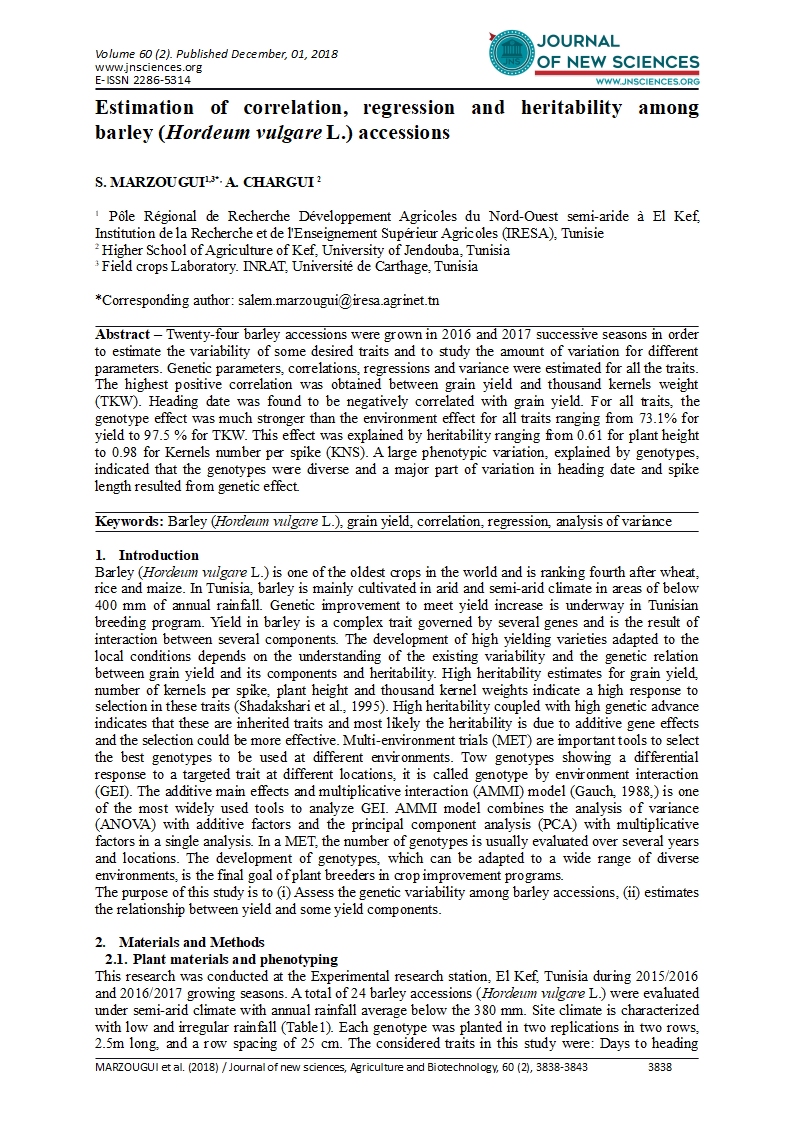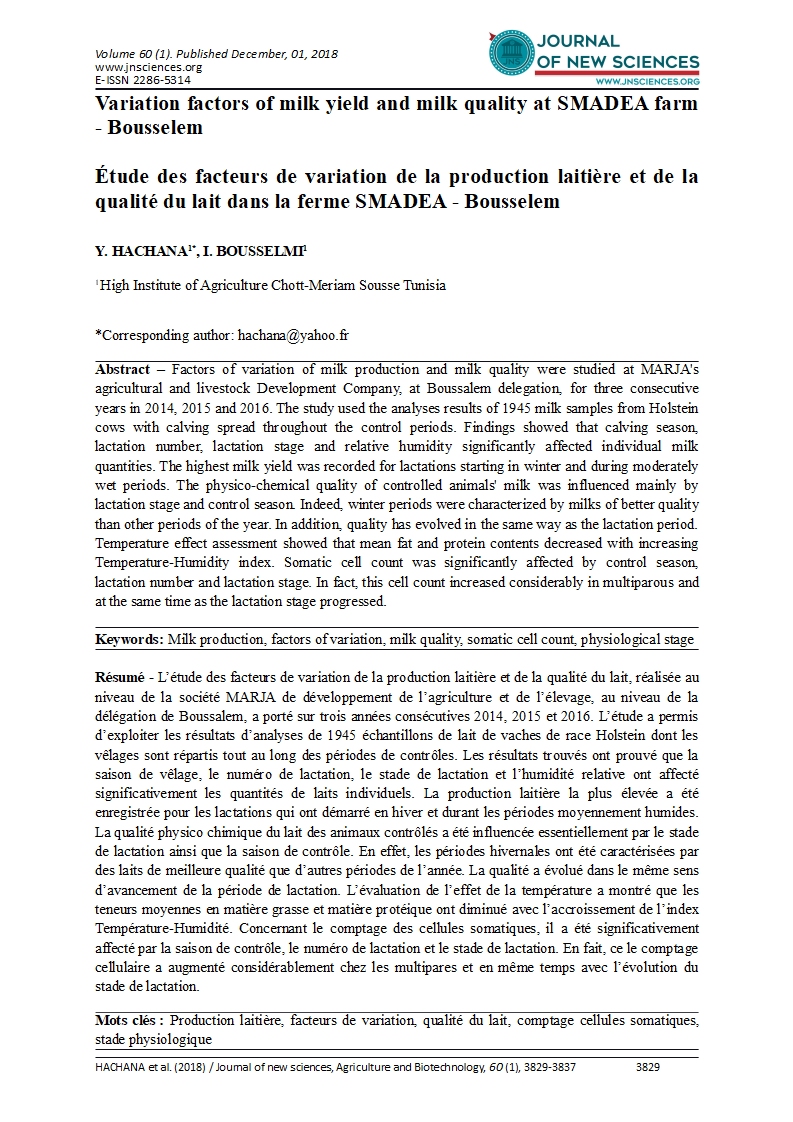- Category: Volume 60
- Hits: 4299
In vitro control of oxidative browning: Case of amaryllis (Amaryllis belladonna L.)

Contrôle du brunissement enzymatique en culture in vitro: Cas de l’amaryllis (Amaryllis belladonna L.)
S. ARBAOUI1
S. SOUFI1
T. BETTAIEB 1
1 Laboratoire des Sciences Horticoles, Universités de Carthage. Institut National Agronomique de Tunisie, 43 Avenue Charles Nicolle, Tunis 1082, Tunisie.
Abstract – Oxidative browning is one of the main problems in plant tissue culture systems caused by the accumulation and oxidation of phenolic compounds and limits their propagation. To prevent and to overcome this limitation a number of techniques and antioxidant products such as activated charcoal and ß-Cyclodextrin were applied during the initiation phase of Amaryllis; sensitive plant to oxidative browning : Amaryllis belladonna L. The obtained results showed that media supplemented with 2 g/l of activated charcoal exhibited lower browning intensities and, at the same time, the survival and recovery rates of the explants were about 80 %. The ß-Cyclodextrin added to 1 g/l in the culture media also has an effect on the control of enzymatic browning. However, its action remains inferior to that of charcoal and gives similar results only when the pH is lowered to approximately 4.5. Acidic media at pH 4.5, outside the area of activity of polyphenol oxidases, also, limit browning.
Keywords: Enzymatic browning, amaryllis, in vitro culture, antioxidants



